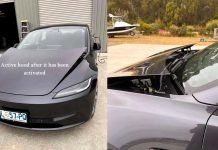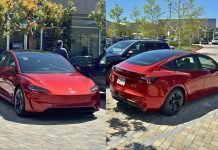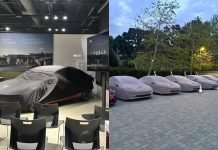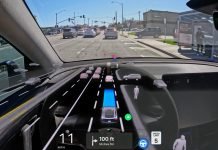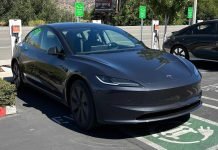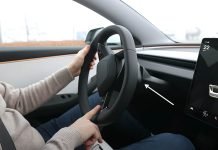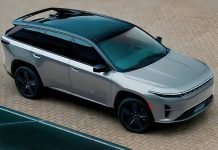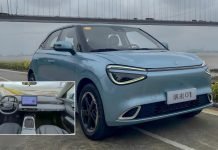Elon Musk is a man who takes fun very seriously. He enjoys what he does. Musk has been creating a stir in two of the biggest industries. He has been doing wonders with his innovative approach when it comes to transportation. Whether you talk about transportation on roads or transportation on to another planet. With Tesla and SpaceX, Elon has proved to the world that no dream is impossible to achieve. He has been making exorbitant claims about his technology and somehow has managed to deliver all of them. Starting the electric car revolution to crossing the 400 miles per charge milestone has been the journey so far for Tesla. Another dream for Elon is to take a million people to mars in an attempt to colonize it in an attempt to save humanity and its consciousness.
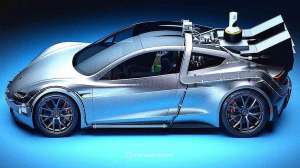
Recently Elon Musk has made his way again in headlines. it was then he declared that he will be providing an optional package for his upcoming Tesla Roadster. The already popular car that has created a lot of buzz in the automobile industry has shattered so many records. “The SpaceX option package” will apparently give wings to the car by making it the fastest accelerating vehicle shattering 1.1 seconds. Combining the technologies at his disposal, cold gas thrusters from SpaceX rockets in the Tesla Roadster which will give the car short flight “hops” launching the car to 60 mph in just a second. Primarily focusing on car performance and customer satisfaction in mind he said that he will keep adding such unique features ensuring that the Tesla Roadster is a “hardcore smackdown” to gasoline cars. Elon’s approach of using all the available technology at his hands and having a keen eye for innovation makes his products stand out of the lot.
Tesla Roadster SpaceX Optional Package
Tesla plans the SpaceX optional package to come equipped with SpaceX thrusters as an upgrade. This optional package is expected to include about 10 rocket thrusters arranged seamlessly around the roadster theoretically adding to the vehicle’s braking ability (thrusters in front), speed acquisition (in back, to perhaps supersede “Plaid” and “Ludicrous” modes), and cornering (side thrusters). Not just aiding to the driving experience, something like the hovering capabilities, will assist with parallel parking.
The new Roadster will actually do something like this https://t.co/fIsTAYa4x8
— Elon Musk (@elonmusk) January 9, 2019
How could Tesla Roadster hit 0-60 mph in 1.1 sec with SpaceX Thrusters?
The SpaceX label as an option package will put rocket thruster to use in the car. The high-pressure canisters chosen to be used as the thruster will potentially be miniature Composite Overwrapped Pressure Vessels (COPV), somewhat similar to the fuel containers used by SpaceX’s first-stage rocket boosters at the re-entry and landing stages. Further adding to this Musk stated these COPV bottles would contain ultra-high pressure air that would “immediately be replenished whenever the vehicle pack power draw allowed operation of the air pump, which is most of the time. These may be used in place of 2 rear seats. To make a comparison it can be thought of as nitrous oxide cylinders for the electric car that will give sudden boost of power but in all directions.
This will make the already amazingly fast Roadster even faster. The Roadster boasts that even without space-faring options, a top speed of 250+ mph, a 0-60 mph time of 1.9 seconds, a quarter-mile time of 8.9 seconds, is available all this coupled with a 200 kWh battery pack that gives 620 miles of range, and 10,000 Nm of torque from the electric hypercar’s three electric motors. The vehicle will weigh around 2000 kg (4,400 lbs) which gives approximately 1.44G’s into acceleration for the base model and 2.5 G’s for the one equipped with Thrusters.
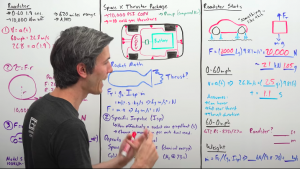
All these unbelievable numbers can be achieved while having four passengers, owing to its 2+2 seating arrangement, although the rear seats will be sacrificed the buyer opts for the SpaceX option.
Tesla’s potential to make exceptional products is remarkable. Tesla is extremely creative when it comes to vehicle performance, additionally providing distinctive advantages like instant torque making the Roadster even more exciting to drive. A 1.1-second acceleration rate from 0-60 mph has never been heard before. Tesla has continuously pushing limits clearly indicating that Musk wants to hold the title of the fastest car in the world. Musk has once said, “We’re going to do things with the new Roadster that are kind of unfair to other cars. (It’s) crushingly good relative to the next best gasoline sports car”
The Tesla Roadster is going to give serious competition to the giants of the automotive world like the Bugatti Veyron.
All these promises predict that the Roadster is going to be a revolutionary car and there’s no denying that. On achieving these figures in real-world the Tesla Roadster will become the quickest car in the world and that too doing with a good margin. A claimed 0-60 mph time of 1.9 seconds for the base model is already killing its competition slaying the top cars with internal combustion engines and costing much more than the Tesla Roadster. Tesla Roadster is going to give serious competition to the giants of the automotive world.
This is crucial as once the fastest car on the planet, the Bugatti Veyron, pulls just 1.55 Gs. The other car to be mentioned in this aspect was the Dodge Demon, which pulls around 1.8 Gs. When compared to the 2.55 G’s of the Tesla Roadster SpaceX package. Currently, the quickest 0-60 mph time is held by the Ultima Evolution Coupé at 2.3 seconds and the Dodge Challenger SRT Demon at the same timing. Another strong contender at 1.7 seconds 0-60 mph timing is the Allspark Owl, a Japanese made electric hypercar.
Understanding the SpaceX Thrusters
Having said much about the Tesla Roadster, let’s shift our focus to the SpaceX Package. Digging deeper into what is actually this thruster and what are its capabilities. Musk has plans to incorporate the thrusters that are crucial hardware of the SpaceX,s Falcon 9 rocket. In terms of design, it is a tank shaped composite overwrapped pressure vessel (COPV). Made out of thin metal liner wrapped in carbon fibers to store a large amount of pressurized air in a very small space and is very lightweight at the same time. In the rocket these are installed inside the propellant tanks to keep them pressurized during flight as the propellant is used up to leave the earth’s surface this COPV fills the vacated space with helium to keep the tank under pressure enabling it to maintain its shape.
Trucks and buses also use COPV’s to store compressed natural gas, cars with hydrogen fuel cells also come equipped with COPV’s. The difference is that the gas inside these tanks is used as a fuel instead of maintaining internal pressure as in the case of the rocket. In the case of the Roadster, Musk wants to use them as thrusters where they may help the car to move ahead or to brake or corner at high speeds depending on which side thrusters are activated.
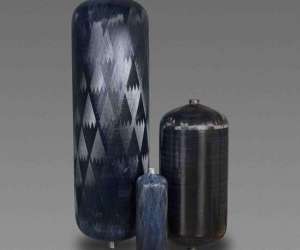
Safety concerns and other limitations due to the use of COPV’s
Commercial cars have to follow a lot of safety standards and regulations so there will be implications as well when using many COPV’s in a passenger car. These acceleration numbers are so astonishing that it puts the tyre technology in doubt whether the tyres can handle such immense power and deliver them effectively from the car to the tarmac.
Looking at the numbers that are to be chased COPV’s would need to blow out a huge amount of cold air at super high speeds for faster acceleration and deceleration times. This will require a big tank and a lot of power to have a perceptible result. Pressurized gases leaving the COPV’s at such fast rates would be extremely loud and susceptible to extreme temperature variations possibly putting surrounding cars at risk. They have a huge force on the cars surrounding Tesla. Cold gas thrusters are capable enough to produce a specific impulse of about 70 seconds meaning the gas leaving the COPV could attain more than 1,500 miles per hour thus this air can potentially send fast-moving debris at a nearby car or even pushing on surrounding vehicles. The downside being the compression of the air takes a lot of power from the battery pack so it would probably hamper the range.
COUNTERMEASURES
This can be countered only if the COPVs are effective. They have a relatively low specific impulse, they require more fuel or air to get decent thrust. So in case of satellites where not much effort by the thrust is needed to maneuver because of vacuum they are effective but on-road, tyre friction and air resistance would make it difficult for the system to work as cold gas won’t be powerful enough or either it would need considerably bigger cans to store enough air.
COPVs can be filled at extremely high pressures to save on space, needing the tanks to be very strong and heavy and use of extra lightweight materials but strong ones would be considered. As the pressure requirement increases the tank’s sturdiness should be increased as well. Tesla plans to use the ones that are certified to be used in Falcon 9 so these issues can be taken care of.
Learning from Past Mistakes
With all this fun and power added to the vehicle concerns about safety have to be taken care of. Having such a pressurized vessel in a car can be a huge risk as well. In 2016, September a COPV was the reason behind an explosion that occurred on a Falcon 9 rocket on a Florida launchpad while the vehicle was being fueled for a test. SpaceX said that the friction between the propellant in the tank and the COPV was responsible for the explosion. The super-cold liquid oxygen in the Falcon 9 reacted badly with the carbon fiber that was wrapped around the COPV.
Since then SpaceX has significantly improved its COPVs. COPVs in Tesla won’t have cryogenic oxygen surrounding it so this issue can be ignored. One thing that has to be looked into is that when air from a highly pressurized bottle is released quickly, it does experience extreme temperature changes. The faster that air is released, the colder the COPV becomes, so relatively the faster Tesla blows down these bottles, the easier it would become for it to reach super frigid temperatures, making the COPVs brittle and less structurally stable. Though this can be managed by blowing the bottles down more slowly, this would jeopardize the whole purpose of the thrusters.
So adding COPVs to a Tesla is attainable, but there are a plethora of implications and standards and regulations to be met. To use such technology on the road, strict testing needs to be done. If everything goes fine, it will definitely open a whole world of possibilities for the automotive industry.

